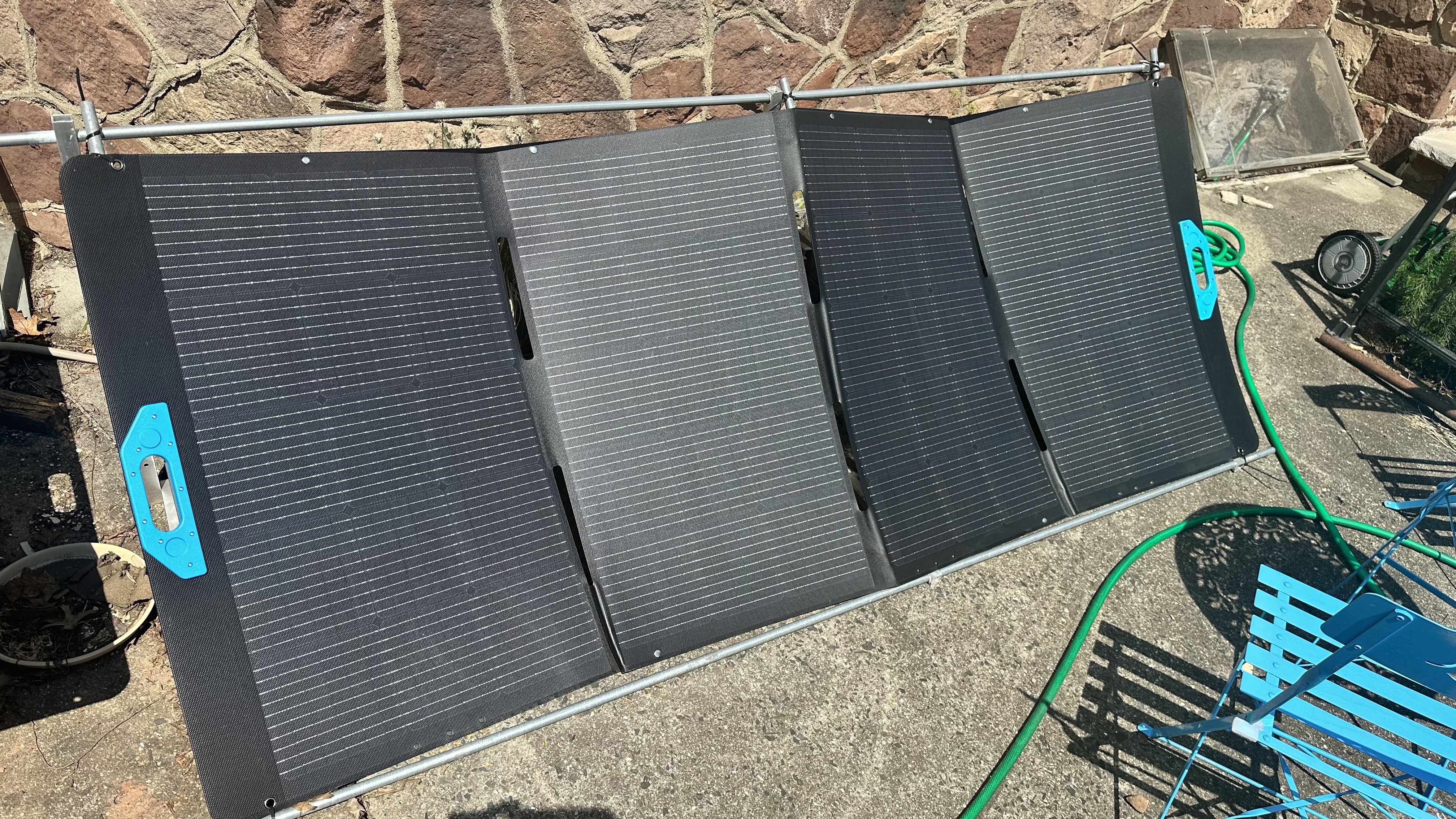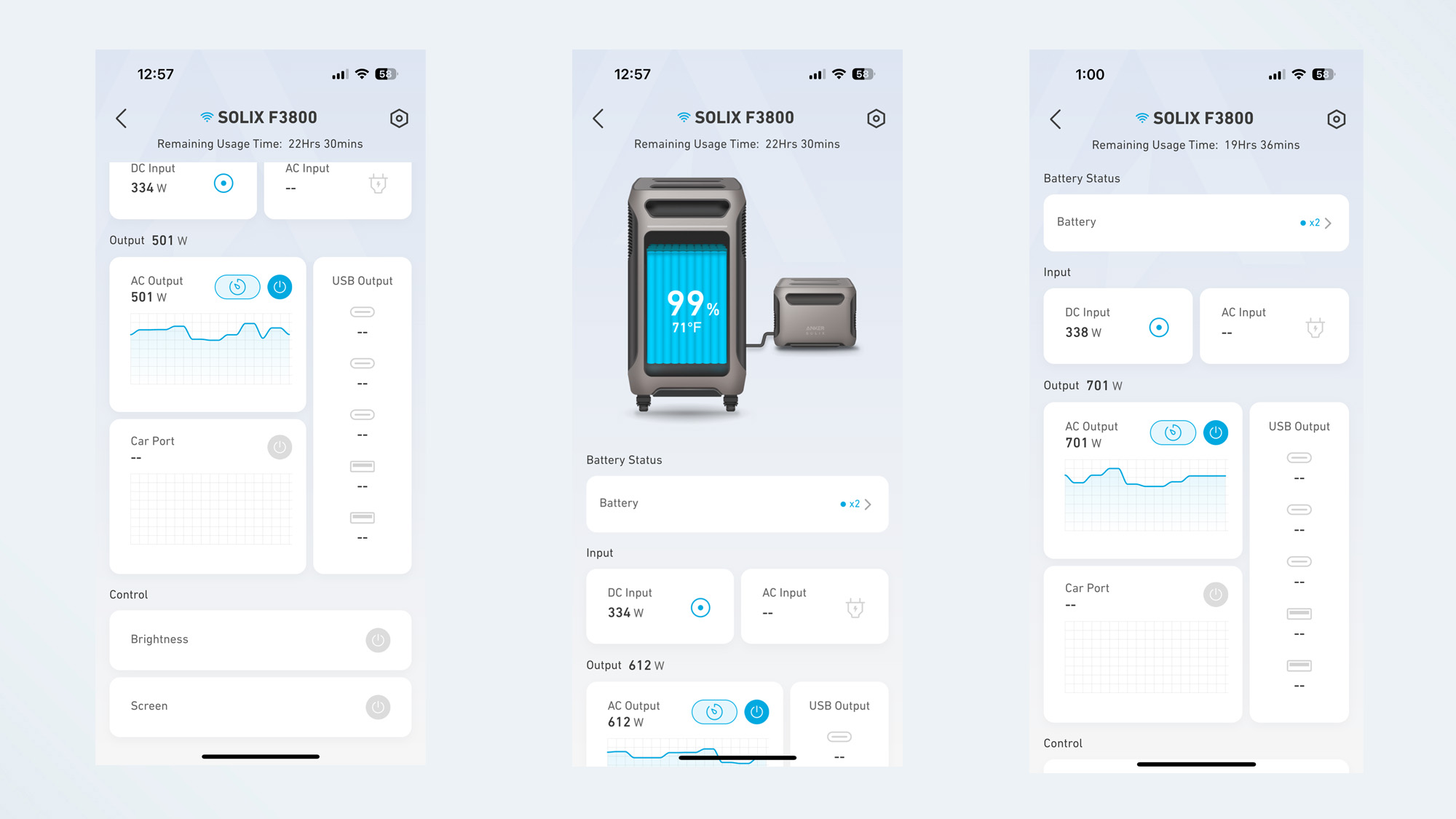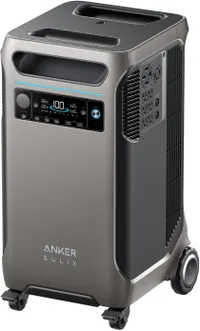I’m taking my air conditioning off the grid this summer — here’s how


As it does for many people, summer for me means more time spent outdoors at barbecues and at the beach. But it also means higher electricity costs as I run my air conditioning to keep my house cool. While I’ve helped mitigate this somewhat by using smart air conditioners that use less energy, I still see my utility prices increase as the weather gets hotter.
This summer, though, I’m going to try something different and take my air conditioning off the grid, so I’m not paying for electricity. Here’s how.
My home setup
My house was built in the 1930s; while central air conditioning had been invented by then, it would be another couple of decades until it became common in residential homes. Some of my neighbors have retrofitted their homes with mini-duct and split systems, but I have to look enviously on as I heave units into my windows every June and put them in storage in September.
But this also provides me with a unique opportunity to see if I can power my window units using nothing but renewable energy this summer.
At the moment, I have a Midea U air conditioner, an LG dual inverter, a TCL, and Hisense air conditioners in various rooms of my house; all use inverter technology, which is more efficient than compressors, and have a more gentle start-up cycle, which I hope will keep from straining the system too much.
How I’m taking my air conditioning off the grid
To provide energy to the air conditioners, I set up an Anker Solix F3800 Portable Power Station in my basement along with a BP3800 expansion battery, and connected it to two Anker SOLIX PS400 Portable Solar Panels. All told, we’re talking about $8,000 worth of equipment, so I don’t expect it to pay for itself in just one summer. Still, that’s less than half the price it would cost to get solar panels installed on the roof, and it will provide me a nice backup should the power go out this summer.
Anker Solix F3800 Power Station: $3,999 @ Amazon
The F3800 has a capacity of 3840Wh and a 6000W output, works with both 120 and 240V, and has a NEMA 14-50 port for RVs, and a NEMA L14-30R port for EVs. It can be recharged by plugging it into your house, or by connecting solar panels. You can also connect additional battery packs for a max of 53.8kWh.
For the month of May, my house used a total of 392kWh, which ranks among the most efficient in my area. Historically, that increases to 500-600kWh during the summer months, when we’re running our air conditioners more often.
Get instant access to breaking news, the hottest reviews, great deals and helpful tips.
In terms of storage, the F3800 has a capacity of 3,840Wh, as does the expansion battery, so I have a total of 7,680Wh of electricity to play with. It remains to be seen how quickly it will drain once I’ve got everything connected.
Anker SOLIX PS400 Solar Panel: $999 @ Amazon
The PS400 can generate up to 400W of electricity, has stands on the back to adjust its angle to 40°, 50°, or 60°, IP67 Waterproof Protection, and comes with two 9.84-foot MC4 solar charging extension cables, and an MC4 to XT-60 solar charging cable converter. The panel weighs 25.6 pounds and measures 35.9 x 26.9 x 2 inches when fully extended, but can be folded for storage and transportation.
The F3800 is a pretty beefy unit, weighing 132 pounds: even though it’s on wheels and has a retractable handle, it still took me and my wife to lug it down the basement stairs. The unit itself has six 110-volt outlets, one 220V, a NEMA 14-50 port for RVs, and three USB-C and two USB-A ports on the front.
Each solar panel can generate up to 400 W of electricity and, according to Anker, fully recharge the F3800 in about two hours. They’re not small: Each measures about 100 inches long by 36 inches tall, and weighs 35 pounds. Fortunately, they fold up, and have big handles to carry them around. The panels also have flaps on the back so you can stand them up at various angles, but I found they were on the flimsy side, so I built a triangular stand out of some old aluminum tubing I had lying around.
To connect the F3800 to my air conditioners, I have to run some pretty beefy extension cords — it’s generally recommended not to connect an air conditioner to an extension cord, but for this purpose, I bought some heavy duty cords rated for 15 amps and 1875 watts, so while I’ll lose a little energy along the way, it’s plenty capable of handling the current.
Because we have air conditioners scattered throughout the house, we generally don’t run them all at the same time. During the day, for instance, we might only use the A/C in our attic, where we have our work-from-home setup; in the evening, we may only use the one on the first floor of the house, and at night, we’ll only use the ones in our bedrooms. So, I don’t expect the individual load on the power bank to be all that great.
How it's going so far

I’m most interested in finding out how much the air conditioners will drain the battery, and how fast the solar panels will be able to keep it topped off. At the moment, I have one air conditioner — the Midea U — connected to the power bank. It initially drew between 500 to 700W as it worked to cool my office to 78 degrees — the recommended temperature you should set your thermostat, according to the Department of Energy — but then settled down to around 300-400W.
The Anker Solix has an app that lets you monitor the input and outputs to the system, as well as manage what devices are getting power.
However, the solar panels are pulling in around 350W, so I'm definitely running a deficit. I believe I may have connected the solar panels incorrectly the the power station — I should be getting closer to 800W — so I'm going to play around with that. I'm also curious to see what happens as I add another air conditioner to the mix.
We're just entering a heat wave in the eastern U.S. where I live, so we're finally using our air conditioners. Stay tuned for my updates on how this project goes.
More from Tom's Guide

Michael A. Prospero is the U.S. Editor-in-Chief for Tom’s Guide. He oversees all evergreen content and oversees the Homes, Smart Home, and Fitness/Wearables categories for the site. In his spare time, he also tests out the latest drones, electric scooters, and smart home gadgets, such as video doorbells. Before his tenure at Tom's Guide, he was the Reviews Editor for Laptop Magazine, a reporter at Fast Company, the Times of Trenton, and, many eons back, an intern at George magazine. He received his undergraduate degree from Boston College, where he worked on the campus newspaper The Heights, and then attended the Columbia University school of Journalism. When he’s not testing out the latest running watch, electric scooter, or skiing or training for a marathon, he’s probably using the latest sous vide machine, smoker, or pizza oven, to the delight — or chagrin — of his family.


